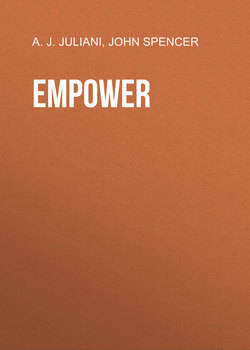Читать книгу Empower - John Spencer - Страница 6
На сайте Литреса книга снята с продажи.
ОглавлениеThis was me (John) in the eighth grade. If you can’t see me, it’s because I was invisible.
And that’s how I liked it.
My entire goal was to go unnoticed. Fly under the radar. Keep away from the Cool Patrol (the people who ran the school’s social hierarchy).
I had one friend, this kid named Matt. We were two nerds in a pod.
And fortunately for me, he had perfect attendance year after year.
So that was my system: find one friend and hang out with him and fly under the radar.
And it worked—until one day it didn’t.
One afternoon, he was gone from school. Nothing serious. He had a cold. But I remember looking out at the sea of students and thinking, I hope one person invites me to their lunch table.
It didn’t happen.
I waited for an eternity, paralyzed by fear. Finally I tossed my food in the trash and hid out in the bathroom, which might be the grossest place in school to hide out.
But here’s the thing: My plan had worked. Nobody had noticed me. And it felt horrible.
Despite all of this, I had two teachers, Mrs. Smoot and Mr. Darrow, who saw me as a person.
They knew I cared about social justice and baseball and history, so they invited me to do a History Day project.
At first it was fun (if a little overwhelming). I had to plan the entire project and track my own progress. I had to figure out what questions to ask and where to find the answers. I had to narrow down my topic to something I cared about—in this case, Jackie Robinson and the racial integration of baseball. Then it became terrifying.
I wrote letters to newscasters and made phone calls to former players. I remember picking up the phone, my hands trembling as I read aloud my pre-recorded script and waited for the stranger to respond. I eventually worked on a slide presentation. (Back in the day when you had to take pictures and go to the drug store to have them converted into little plastic slides.)
However, the most nerve-wracking moment occurred when I sat in a radio studio recording my script. I would play the giant magnetic tape back and use a razor to cut it and Scotch tape to splice it together. I listened to my voice and hated it.
At one point, I threw my hands up in the air. “I’m not doing this,” I said.
But Mrs. Smoot looked me in the eyes and said,
Those words stuck with me forever.
I finished the project, and it continued to be terrifying. I remember the moment I presented to my classmates, and one of the members of the Cool Patrol started a slow clap. At first, I thought he was mocking me. But as others cheered, I realized something.
I wasn’t invisible.
I went on to present at the state and national competition. It was a powerful experience.
And the most powerful part of it was the ownership. I had never owned my learning like that before.
That year had a lasting impact—one that continues even now. Mrs. Smoot’s influence shapes how I teach and how I parent and the creative work I do on a daily basis.
I became a different person—not because of the program or even the process but because of a teacher who saw something in me that I couldn’t see in myself.
That was empowering.
I became a maker.
And while I didn’t recognize it at the time, that experience ultimately shaped why I became a teacher.
Visit EmpowerBook.co to get practical resources for empowering our learners. Join the discussion online using the hashtag #empowerbook.
